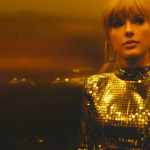By The Malketeer
The Nostalgic Roots of Scent Marketing
Long before “olfactory branding” became a buzzword, the power of scent in commerce was already evident.
As a primary school student in the 1960s, I vividly recall the travelling coffee sellers who would visit rural towns and kampungs. These entrepreneurial individuals, astride their motorcycles, would grind coffee beans using mechanically-powered grinders attached to their vehicles.
The rich, intoxicating aroma of freshly ground coffee would waft through the air, drawing entire neighbourhoods to surround the seller. This was scent marketing in its purest, most unadulterated form – no fancy branding, just brown paper packages filled with aromatic, freshly ground beans.
Even the iconic Morris Minors of that era possessed a distinctive scent – a unique olfactory signature that became part of the car’s charm and identity.
These experiences highlight the longstanding, often subconscious role that scent has played in our interactions with products and brands.
The Modern Landscape of Olfactory Branding
In today’s fiercely competitive business environment, companies are constantly seeking innovative ways to differentiate themselves.
Enter olfactory branding – a sophisticated marketing strategy that harnesses the often-underestimated sense of smell to create lasting impressions.
While visual marketing has long dominated the field, mounting research indicates that scents forge stronger emotional connections and leave more enduring memories than sight alone.
From Coffee Shops to Luxury Cars: Scent Marketing in Action
Starbucks, the coffee behemoth, has masterfully employed olfactory branding. The inviting aroma of freshly brewed coffee that permeates their stores isn’t merely a byproduct – it’s a meticulously crafted strategy to entice customers.
But Starbucks is far from alone in this aromatic revolution.
Traditional Malaysian kopitiams have long understood the power of scent, with the inviting aroma of kopi and kaya toast naturally drawing in customers. These local coffee shops have been unwittingly practicing olfactory branding for generations, creating a sensory experience that’s deeply ingrained in Malaysian culture.
Luxury car manufacturer Bentley has developed a bespoke fragrance for their vehicles, artfully blending notes of leather, and wood, to evoke a sense of opulence and nostalgia. Even tech giant Samsung has joined the olfactory fray, infusing their stores with a subtle blend of wood and citrus scents to create a warm, inviting atmosphere that complements their sleek, modern products.
The Science Behind Scent’s Success
Our olfactory system is intricately and directly linked to the brain’s emotional centre, making smell a potent tool for creating deep, lasting connections.
Unlike visual or auditory cues, scents possess the unique ability to instantly transport us to specific memories or evoke particular emotions. This psychological power is what makes olfactory branding so remarkably effective.
Crafting a Signature Scent: More Than Just Pleasant Smells
Creating a signature scent involves far more than simply selecting a pleasant aroma. It requires careful consideration of brand values, target audience, and desired emotional responses.
For instance, Singapore Airlines’ patented scent, “Stefan Floridian Waters,” expertly blends floral and citrus notes to create a calming, luxurious atmosphere that aligns perfectly with their premium brand image.
Multi-Sensory Experiences: The Future of Branding
As technology advances at a breathtaking pace, the potential for olfactory branding expands exponentially.
Virtual and augmented reality experiences are beginning to incorporate scent, creating more immersive and memorable brand interactions.
Imagine donning a VR headset to explore a virtual IKEA showroom while the comforting scent of Swedish meatballs and pine furniture fills the air, creating a multi-sensory experience that bridges the digital and physical worlds.
Challenges and Considerations in Scent Marketing
While undeniably powerful, olfactory branding isn’t without its challenges. Overuse of scents can be overwhelming or even trigger allergic reactions in some individuals. Brands must strike a delicate balance, ensuring their scent enhances rather than detracts from the customer experience.
Additionally, cultural differences in scent preferences must be carefully considered for global brands. What’s pleasant and enticing in one market might be off-putting or even offensive in another, necessitating a nuanced, culturally-aware approach to olfactory branding.
Measuring the Impact: ROI of Olfactory Branding
Quantifying the return on investment for scent marketing can be complex, but early studies are remarkably promising.
Research has shown that the right scent can increase customer dwell time, improve brand recall, and even boost sales. For example, a study by the Scent Marketing Institute found that the use of a simple vanilla scent in a retail environment increased sales by an impressive 23%.
The Ethical Dimension: Transparency in Scent Marketing
As olfactory branding becomes more prevalent and sophisticated, important questions of ethics and transparency arise.
Should brands be required to disclose their use of scent marketing? How can consumers be protected from potentially manipulative practices?
These are crucial considerations as the field continues to evolve and expand.
The Future is Fragrant
Olfactory branding represents a fascinating and rapidly expanding frontier in marketing, offering brands a unique way to connect with consumers on a deeper, more emotional level.
As technology advances and our understanding of the psychology of scent grows, we can expect to see even more innovative and immersive applications of this powerful tool.
MARKETING Magazine is not responsible for the content of external sites.











